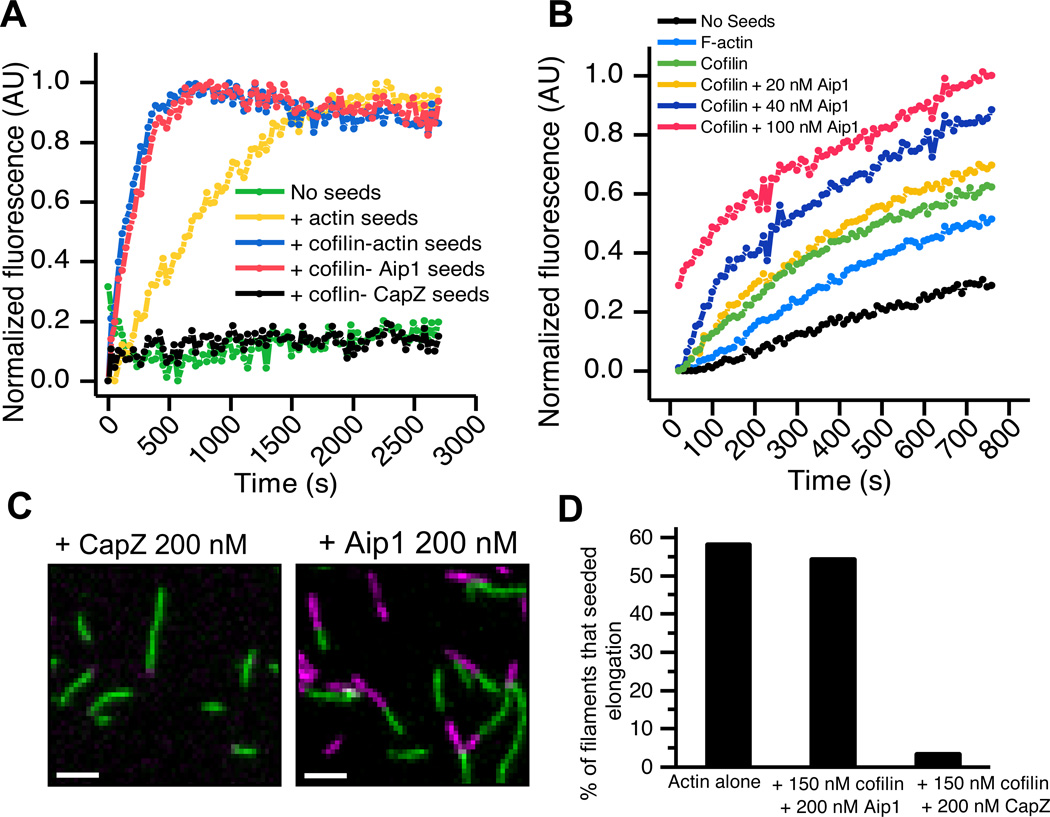FIGURE 6.
Aip1 does not cap filament ends. (A) Aip1 does not inhibit seeding of pyrene actin polymerization. Actin filaments were mixed with 2 uM cofilin +/− 0.2 uM Aip1 or CapZ for 15 minutes and then 0.25 µM total actin was used to seed polymerization of 2 µM pyrene actin. While the lag phase of unseeded actin is long (green line), actin seeds shorten the lag phase of polymerization (yellow line). Cofilin creates many severed ends that seed polymerization more efficiently whereas Aip1 does not inhibit this reaction (blue and pink lines). CapZ however inhibits the seeding reaction (black line). (B) Increasing amounts of Aip1 in the presence of cofilin produce more filament seeds for elongation. Filaments depolymerized in the presence of 20, 40 and 100 nM Aip1 (yellow, blue and pink lines respectively) and (a fixed amount) of cofilin show enhanced seeding as compared to cofilin alone seeds (green line). (C) Oregon Green 488 actin filaments elongate with Alexa 647 G-actin even in the continuous presence of 150 nM cofilin and 200 nM Aip1 (right panel), however, the presence of 200 nM CapZ inhibits this reaction (left panel). Scale bar= 2 µm. (D) Quantitation of the relative numbers of elongating ends in the presence of actin alone or actin and 150 nM Cofilin +/− 200 nM CapZ or Aip1.

